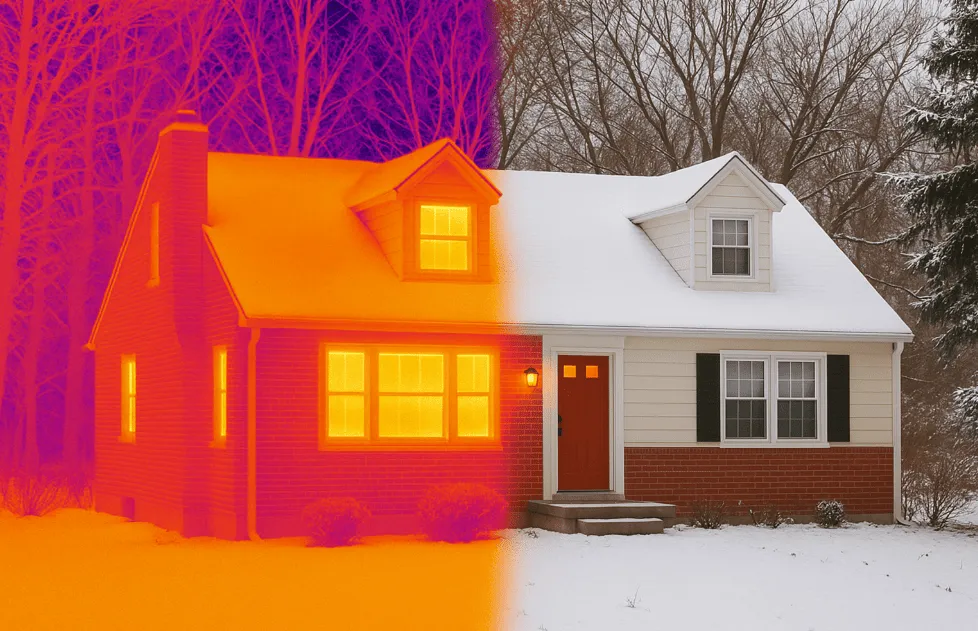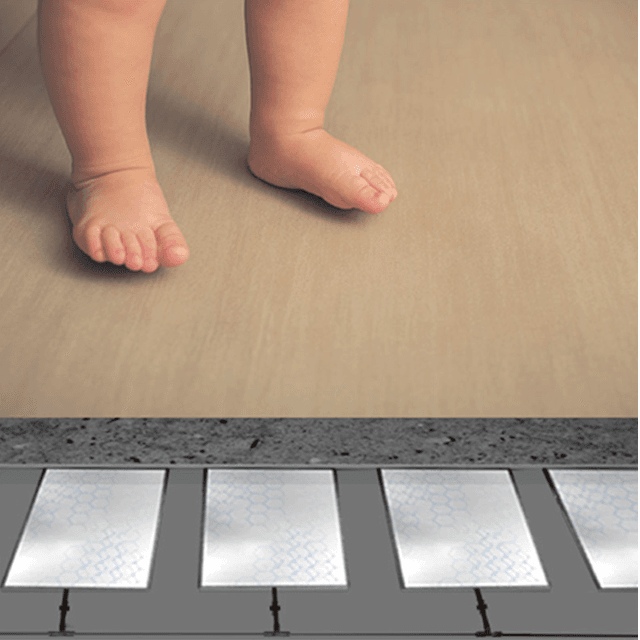As the global effort to achieve net zero emissions accelerates, household heating is becoming a key area for carbon reduction. Graphene underfloor heating is an emerging technology that combines high efficiency, precise control, and synergy with green electricity systems—providing strong technical support for achieving net-zero homes.

Table of Contents
What is Graphene Underfloor Heating, and What Makes It Exceptional?
Infrared heating is a technology that directly warms objects and people through heat radiation instead of heating the surrounding air through convection like traditional systems. This method is more efficient and comfortable.
How Infrared Heating Works in Your Building
Infrared heating directly warms objects and people in the room using radiant waves, and these heated objects then gradually warm the surrounding air. This method results in faster heating and lower energy consumption. For example, installing infrared heating systems in homes or offices quickly raises room temperature, delivering immediate comfort.
Types of Infrared Heating Systems and Applications
- Electric Infrared Heating Systems: Powered by electricity, commonly available as heating panels or infrared lamps, ideal for homes, offices, and small retail spaces.
- Gas-powered Infrared Heating Systems: Use natural gas or LPG, typically suitable for industrial factories, warehouses, gyms, and other large spaces.
Advantages of Infrared Heating for Your Building
- Energy Efficient: Reduces energy costs.
- Improved Air Quality: Does not create dust or dry the air.
- Fast Heating: Quickly achieves comfortable room temperatures.
- Easy Installation and Maintenance.
Low Life‑Cycle Carbon Footprint
When combined with high‑insulation building techniques (e.g., Passivhaus), graphene underfloor heating helps substantially cut carbon emissions over the whole building life cycle—including materials and operation.
Potential Drawbacks and Considerations
Despite many advantages, the following considerations remain important:
- Initial investment can be high.
- Limited effectiveness in spaces with high ceilings.
- Safety distances and proper installation procedures must be observed.
Experts recommend consulting professionals before installation to ensure the correct choice of system and installation method.
Tackles Energy Poverty
Fast response and low-temperature comfort mean lower heating bills, which is crucial for vulnerable households and retirees during cold winters.
How to Choose the Right Infrared Heating System
- Select based on space size and intended use.
- Determine the necessary power and heating coverage area.
Choose reputable brands and suppliers.
Frequently Asked Questions about Infrared Heating
- Is infrared heating safe?
Yes, if installed properly following safety standards. - What is the lifespan of infrared heating devices?
Usually, they last 15-25 years. - How to maintain infrared heating systems?
Regularly clean surfaces and check electrical components.
Conclusion
Infrared heating systems are increasingly favored by homes and businesses due to their efficiency, energy-saving benefits, and comfort. Consider your space size, usage, and budget carefully when selecting an infrared heating system to ensure optimal performance.


